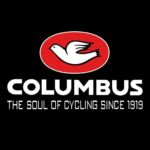To give increased strength and reduced weight, Colombo began experimenting with ‘butted’ tubes – with variable wall thickness along their length. Three years later, in 1930, Angelo Luigi created the brand name ‘Columbus’, which was initially only associated with tubular chromed-steel furniture. After an initial trial period, in which Columbus exhibited at the VI Triennale in Milan, Angelo Luigi obtained exclusivity of supply to EMBRU for the production of Marcel Breuer’s iconic furniture designs. Shortly afterwards, Columbus furniture was in high demand – for offices, universities and schools as well as homes. The best rationalist architects of the time – Figini, Pollini, Terragni, Pagano, Pucci, Faccioli – crafted designs for Columbus, bringing innovation to the furniture industry and further reinforcing the reputation of Columbus as leaders in modernist design.
Columbus
In 1919, as Europe emerged from the ashes of the Great War, a twenty-seven year old Angelo Luigi ‘A.L.’ Colombo signed the lease on a small factory and so began the production of steel tubes. With demand for bicycles running high, their makers were amongst his first customers – Edoardo Bianchi, Umberto Dei, Atala, Giovanni Maino. With his tubing well-proven in the bicycle industry, Angelo Luigi saw strength in creativity and diversity and was soon supplying material for the tubular frames of seaplanes and road vehicles, as well as for furniture and ski-poles. Italy was at the forefront of aviation in the 1920s, and Colombo enjoyed a strong relationship with Caproni, manufacturing the tubing that formed the backbone of their famous aircraft. In 1933 Colombo became part of aviation history, with De Pinedo and Balbo’s transatlantic planes having airframes constructed from Colombo tubing – the same tubing that was, at that time, used to fabricate race-winning Moto Guzzi motorcycle chassis.
Later in the 1930s, the Columbus name, along with ‘Aelle’ and ‘Tenax’ was first applied to special sets of bicycle tubes – the Columbus tubes being drawn from Chrome Molybdenum steel and the fork blades being elliptical, laying down standard characteristics that remain commonplace to this day. Never satisfied, Colombo worked to the maxim “Curiosity is a prelude to knowledge” and continued to experiment in the fields of mechanics and metallurgy.
Colombo even designed and built their own butting machines to manufacture the tubes with tapering wall thickness – reinforcing the tubes at the joints where stresses are greatest. Colombo supplied tubes for racing car skeletons and Colombo’s son, Gilberto, designed chassis for the immortal Italian manufacturers Lancia, Maserati and Ferrari. Fangio (‘El Maestro’), Ascari and ‘Gigi’ Villoresi were carried to victory on Colombo chassis. Some of the tube profiles created at this time will find their application onto bicycle frames in the following years.
‘Columbus’, a new company dedicated to the development and production of specialist tubes for bicycle frames, is formed in 1977. Antonio Colombo, son of Angelo Luigi, leaves his position as President of A.L. Colombo to devote himself entirely to the new-born Columbus. Extensive experience gained from cycle, aircraft and automobile testing was the driving force of the business: Columbus, reinforced by the fact that the Italian artisans who use Columbus tubes are admired and known all over the world, were determined to conquer international markets.
Since that time continuous uninterrupted research, highlighting the parts of the frame subjected to the highest stress, has helped to improve stiffness and strength and increase resistance to deformation and breakage. Among the notable innovations are the taper-gauge elliptical fork blades, the conical helix tube butting, ‘Air’ – the first fully-aerodynamic tube set, and ‘Max’ – offering the advantages of differing oversize tube profiles to bicycle designers and riders.
Parallel to an increasingly diverse production line, manufacturing 900 different types of tubes all of controlled origin and guaranteed quality, comes a growing competitive sector.
For record attempts on the track, Columbus have developed super-light tube sets for the greatest champions: Coppi, Anquetil, Baldini, Rivière, Bracke, Ritter, Merckx, Moser, Oersted.
The doctrine of intelligent experimentation and technological progress continues to be the main focus of the new Columbus, independent from A.L. Colombo since 1978.
From research conducted in collaboration with the most prestigious research institutions, and through sophisticated tests carried out on the road and in the laboratory, Columbus will continue to develop new materials and designs; new tube sets which are highly valued by the top riders: from Gimondi to Merckx, Hinault to Argentin, Lemond and Roche.
Currently, Columbus is the leading manufactured of high-precision steel tubes, and also offering a growing range of new-generation bicycle carbon forks. The all-round focus on the bicycle framebuidling, brought the company to the development of a very wide range of proprietary solutions, alloys, metal and composite components, that are currently used all over the world.
From the very small one-man-bands, led by historical and legendary artisans, till the OEM mass-production scale, all the major cycling brands now offering a high-quality steel frame are relying on Columbus products and services. More than a century of innovations, know-how and heritage, now fully focused on the development of new performing solutions, no matter if on-road or off-road, is made of steel or carbon. Thanks to the most updated modern technologies, Columbus recently been able to release award winning materials, like the XCr tubing-set, prized with the IF-Award in 2008.
The long-time tight connection with the frame manufacturers and the actual athletes, recently allowed the realization of revolutionary steel-frame design, which has been ridden by Pro-Tour cyclists in some of the most prestigious international competitions, bringing back the focus on the great potentials of the steel. The soul of cycling since 1919, always looking ahead.




